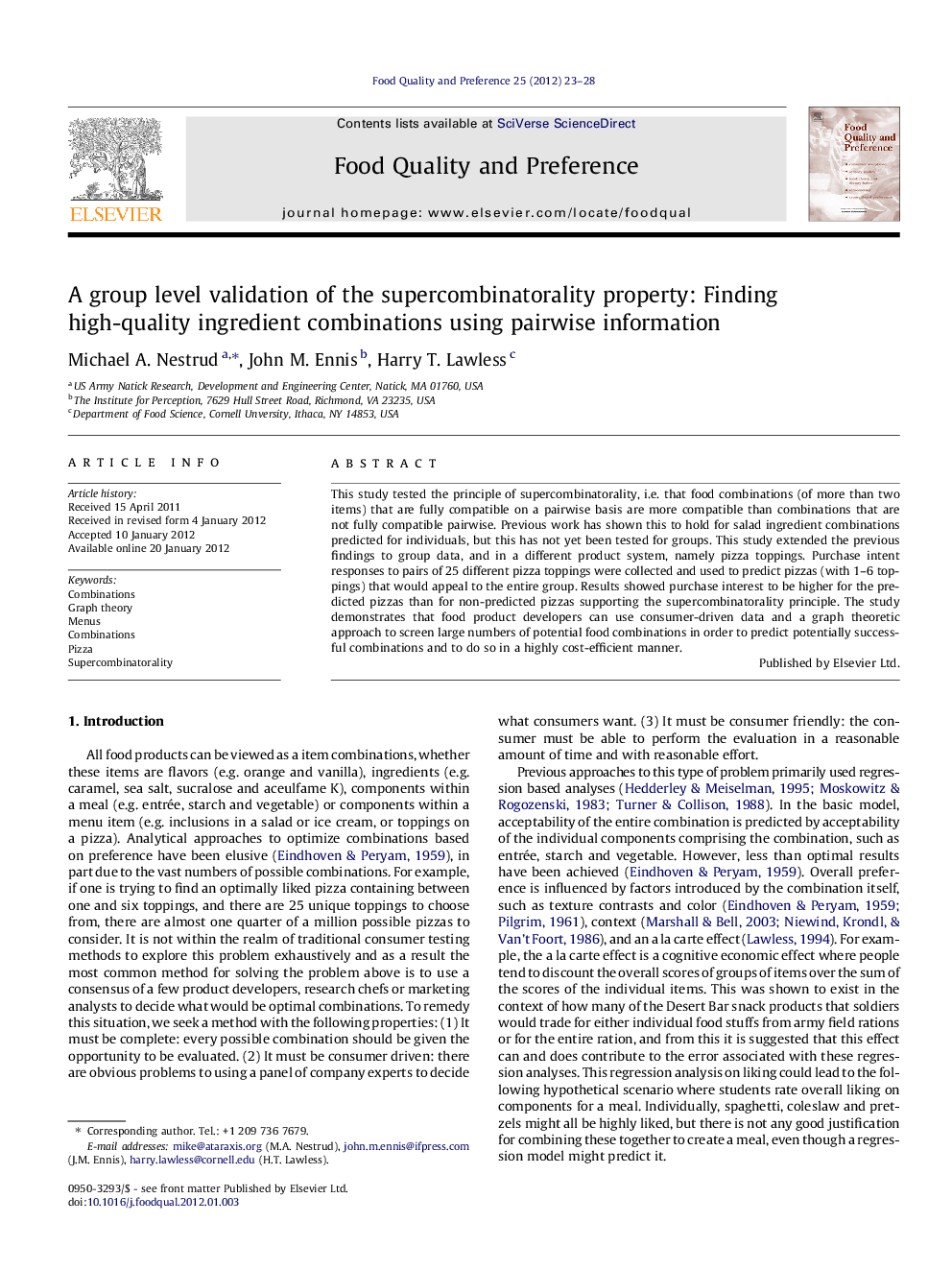| Article ID | Journal | Published Year | Pages | File Type |
|---|---|---|---|---|
| 4317598 | Food Quality and Preference | 2012 | 6 Pages |
This study tested the principle of supercombinatorality, i.e. that food combinations (of more than two items) that are fully compatible on a pairwise basis are more compatible than combinations that are not fully compatible pairwise. Previous work has shown this to hold for salad ingredient combinations predicted for individuals, but this has not yet been tested for groups. This study extended the previous findings to group data, and in a different product system, namely pizza toppings. Purchase intent responses to pairs of 25 different pizza toppings were collected and used to predict pizzas (with 1–6 toppings) that would appeal to the entire group. Results showed purchase interest to be higher for the predicted pizzas than for non-predicted pizzas supporting the supercombinatorality principle. The study demonstrates that food product developers can use consumer-driven data and a graph theoretic approach to screen large numbers of potential food combinations in order to predict potentially successful combinations and to do so in a highly cost-efficient manner.
► Graph theory provides tools to efficiently screen and analyze combinations of foods. ► The principle of supercombinatorality states that we can predict larger combinations of compatible food items from pairwise responses. ► The supercombinatorality principle holds up when we combine group data. ► This paper validates the principle for pizza, and provides a template for validating the supercombinatorality with other product categories.
